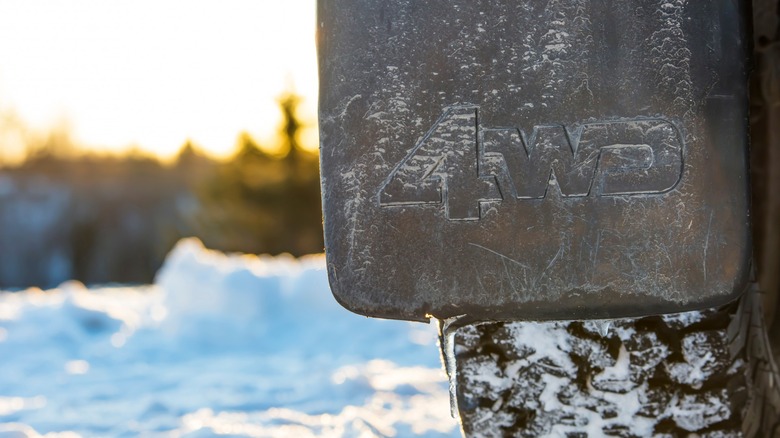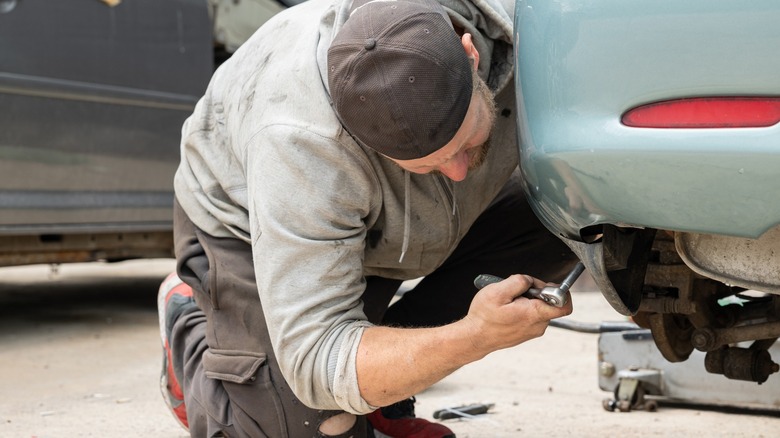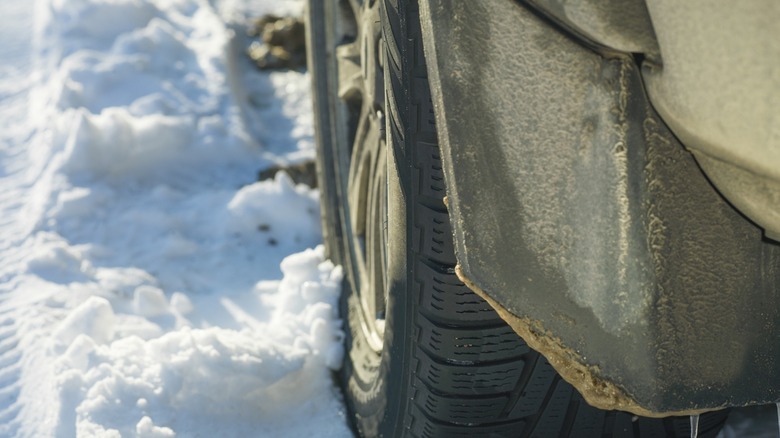What Are Mudflaps For? (And Why You Might Want To Use Them)
Do you know that certain car accessories are actually a lot more important than they seem? A great example is a mudflap. It might seem like some negligible piece of rubber or plastic, but no matter the type of car you drive — whether it's a sedan, SUV, or truck — there's a good chance you'll end up driving on pretty rocky, sandy, or muddy roads often.
As your tires zip past these terrains, what do you suppose protects the sensitive parts of your car from trapping rocks, dirt, and grime? If you guessed mudflap, you guessed right. A mudflap comes in handy to protect your car.
But how exactly does it protect your car? Is it a gimmick advertised to get you to spend a couple extra bucks? Or does it actually offer some utility to your car? Let's get into all the details of what mudflaps are used for and whether you really need to get some for your car.
Why are mudflaps important?
You may have noticed rectangular, often black pieces of rubber or plastic hanging behind the rear of a vehicle's wheels — those are mudflaps. They might come in other colors and lengths, but they are primarily plain, simple, and durable. When you drive, your tires spin super fast and can throw up all sorts of stuff like rainwater, mud, rocks, and other road debris, especially when you try to rev out of a muddy spot. Mudflaps hang behind the tires, acting like a shield to prevent all that gunk from getting any further up into your car's wheel well.
Now, in a situation where your car doesn't have a mudflap: The more often you drive, packing up all sorts of oil, slush, and muddy water along the way, the higher the chances these all coagulate underneath your car.
Although it's one of those hidden spots in your car that you might be missing during your cleaning routine, if you're not in the habit of cleaning your car's wheel well or you don't do it properly, the accumulation of gunk up there could be annoying and cause serious damage to your vehicle. Mudflaps protect your car's wheel well and general undercarriage from dirt, rust, and corrosion. They also make cleaning your car a lot easier.
Beyond this, while there are no federal laws regarding this, several states require you to have a set of mudflaps, depending on the type of vehicle. Ensure you check your state's requirements and confirm you're not breaking any laws.
What to consider before buying mudflaps?
There are different types of mudflaps, but in terms of material, you'll most likely choose between plastic and rubber. Plastic mudflaps work better on smaller vehicles like sedans, while a rubber set often goes on a bigger vehicle like an SUV.
A step up from mudflaps is a different form of protection called splash guards. They perform the same function as a mudflap, only they're wider, longer, and more suitable for heavy-duty trucks. The type of car you drive determines which one you'll generally go for.
When shopping for wheel well protection, make sure to choose good quality mudflaps. Although they're generally affordable, choosing poorly designed mudflaps or installing them incorrectly could do more harm than good. For instance, if the mudflaps are attached too tight, instead of protecting your car, they could rub on the body too tight — damaging your car's paint job in that area. Consider your car's model and ensure the mudflaps you pick are compatible with its size and design.


